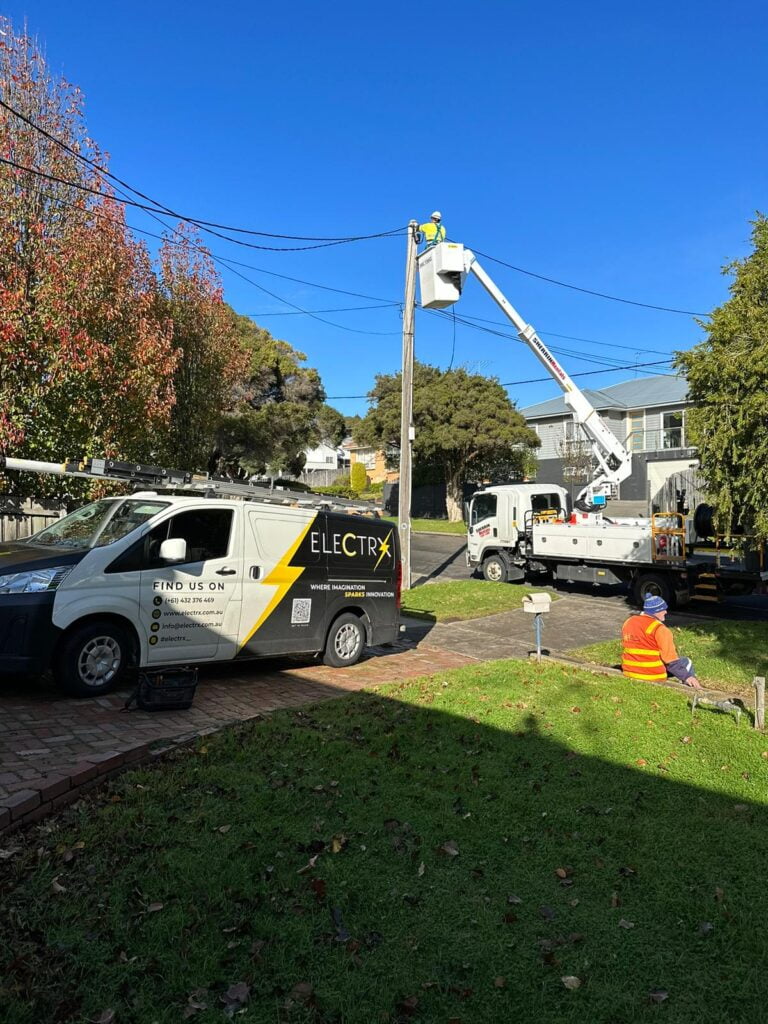Discover the Crucial Functions of a Property Surveyor in Melbourne
Understanding the Core Duties of a Property Surveyor
A property surveyor in Melbourne plays an indispensable role by specializing in the meticulous assessment of land and property boundaries. They develop intricate maps and comprehensive reports that distinctly outline property lines, which are essential for averting disputes among landowners and facilitating smoother transactions for both buyers and sellers. This role becomes increasingly vital in Melbourne, where rapid urban development can introduce numerous challenges for property owners, developers, and local councils. The specialized knowledge of a surveyor is crucial in ensuring that land developments comply with legal standards and urban planning requirements, effectively mitigating potential issues before they arise.
In Melbourne, the responsibilities of a property surveyor extend well beyond simply marking boundaries. Their expertise encompasses evaluating site conditions, offering strategic advice on optimal land use, and making considerable contributions to project planning. This in-depth knowledge is essential across diverse sectors, including residential, commercial, and industrial properties, ensuring that all developments comply with local regulations while promoting sustainable practices. Surveyors are instrumental during property transactions, as their analyses can significantly influence a site’s market value and overall attractiveness in the real estate market.

The Importance of Property Surveying in Melbourne’s Real Estate Market
Property surveying holds immense significance in Melbourne’s competitive real estate landscape, where precise evaluations of land boundaries can avert disputes that might escalate into costly legal challenges. These professionals lay a solid foundation for all land transactions, instilling confidence in both buyers and sellers. Furthermore, in a city where land is immensely sought after, having a clear understanding of property boundaries can profoundly impact decisions regarding potential improvements, expansions, or subdivisions.
From an urban planning perspective, property surveys play a crucial role in shaping the future landscape of Melbourne. As the city continues to expand, the demand for thoughtful and sustainable development practices increases. Surveyors work closely with urban planners and developers to ensure that projects align with local zoning laws, respect environmental factors, and effectively address community needs. Their specialized insights can be pivotal in determining a project’s success, contributing to improved living conditions and infrastructure for Melbourne’s residents.
Tips for Choosing the Right Property Surveyor in Melbourne
Selecting an appropriate property surveyor in Melbourne necessitates careful consideration of several key factors to ensure you hire a qualified expert. Start by confirming their credentials; it is essential that your chosen surveyor holds a degree in surveying and is registered with the Surveying and Spatial Sciences Institute of Australia. Experience is another critical aspect; seek surveyors who possess a solid track record within Melbourne’s unique property landscape, as their familiarity with local conditions can greatly influence the success of your project.
Client reviews and testimonials provide valuable insights into a surveyor’s reliability and service quality, making them a worthwhile resource for prospective clients. Additionally, consider their area of specialization; some surveyors may primarily focus on residential properties, while others may excel in commercial or industrial projects. A well-rounded portfolio showcasing a variety of successful projects serves as a strong indicator of a surveyor’s skills and versatility within the field.
Gain In-Depth Knowledge About Property Surveyor Melbourne
Essential Qualifications to Look for in a Property Surveyor
When hiring a property surveyor in Melbourne, certain qualifications can distinguish capable professionals from the competition. It is crucial to ensure that your selected surveyor possesses a degree in surveying and is duly registered with relevant Australian organizations. Look for certifications from the Surveying and Spatial Sciences Institute. Here is a concise list of key qualifications to keep in mind:
- Degree in Surveying or a related discipline
- Registration with the Surveying and Spatial Sciences Institute
- Membership in professional associations
- Experience within Melbourne’s property market
- Specializations in land, engineering, or construction surveying
- Documented success in completed projects
- Strong understanding of local regulations and zoning laws
- Commitment to ongoing education and training in surveying technology
By focusing on these qualifications, you can ensure that your surveyor has the essential skills and knowledge needed to effectively navigate Melbourne’s distinctive property landscape.
The Role of Technology in Modern Surveying Practices
Modern property surveyors in Melbourne leverage advanced technologies to enhance both accuracy and efficiency in their work. Tools such as GPS, drones, and 3D modelling software have revolutionized traditional surveying methods. GPS technology allows surveyors to pinpoint precise locations and boundaries with remarkable accuracy, significantly minimizing the risk of human errors. Drones are transforming land surveying by enabling aerial surveys that generate extensive data across large areas in a fraction of the time needed for ground assessments.
For example, a recent project in Melbourne’s Docklands utilized drone technology for surveying the waterfront. The aerial imagery captured provided accurate topographical data, enabling surveyors to identify potential hazards and evaluate the area’s suitability for development. This integration of technology streamlines the surveying process while enhancing the quality of the data collected, leading to more informed decision-making for both developers and clients.
Identifying Key Attributes of an Outstanding Surveyor
In Melbourne’s highly competitive property market, several characteristics can differentiate one property surveyor from another. Experience is paramount; seasoned surveyors often possess extensive knowledge about local regulations, historical property challenges, and community planning initiatives. Additionally, client testimonials can provide invaluable insights into a surveyor’s reliability, professionalism, and communication skills, which are key elements in building trust.
A strong portfolio is another critical factor. Surveyors who have managed a diverse range of projects, including residential developments, commercial buildings, and infrastructure projects, effectively demonstrate their versatility and capability in handling complex surveying tasks. Moreover, seeking surveyors who maintain active engagement with their clients, providing clear explanations of survey results and responding promptly to inquiries, significantly enhances the overall experience for clients navigating Melbourne’s property landscape.
Steps to Selecting the Ideal Property Surveyor in Melbourne
Choosing the right property surveyor in Melbourne requires careful consideration to ensure you select a competent professional who meets your specific needs. Reputation is crucial; look for surveyors who are recognized for their integrity and high-quality work. Online reviews can provide insights into their past performance, while personal recommendations from friends, family, or real estate professionals can also be invaluable.
Additionally, it is vital to consider the surveyor’s experience with local regulations and land use policies. Melbourne has distinctive planning laws and guidelines, and a surveyor well-versed in these will be better equipped to navigate potential challenges. Effective communication skills are equally important; a skilled surveyor should be capable of explaining complex concepts clearly, keeping you informed throughout the process.
Taking the time to select the right surveyor can prevent future complications and disputes, ensuring a smooth property transaction or development project.
A Comprehensive Overview of the Property Surveying Process in Melbourne
Key Steps Involved in Conducting a Property Survey
The property surveying process in Melbourne typically involves several essential steps designed to ensure accuracy and compliance with local regulations. Initially, a thorough site inspection is conducted, during which the surveyor visits the property to gather critical data, assess physical features, and identify any potential obstacles that may affect the surveying process. This initial phase usually encompasses measuring existing structures and pinpointing boundary markers.
Following the site inspection, data collection occurs. This phase employs various tools and technologies to gather comprehensive information regarding the property’s dimensions and characteristics. The data collected is then meticulously analyzed to produce accurate measurements and identify any discrepancies or issues that may need addressing. The final step involves generating a detailed report that includes maps, boundary descriptions, and any recommendations regarding the property.
This systematic approach guarantees a thorough examination of all aspects of the property, resulting in a reliable and legally binding survey report that can serve multiple purposes, from property transactions to development planning.
Typical Duration for Completing a Property Survey
The time required to complete a property survey in Melbourne can vary significantly based on the size and complexity of the involved property. For smaller residential properties, a survey might be finalized within a few days, while larger or more intricate sites, such as commercial developments or those with historical complexities, may take several weeks to complete. Factors that influence the duration of a survey include site accessibility, the technology utilized, and the efficiency of the surveyor.
Moreover, the timeline may also be affected by local council requirements for approvals and permits, which can extend the overall process. Understanding these variables is crucial when planning for a property survey, enabling clients to establish realistic timelines and expectations. Maintaining open communication with your surveyor can help you stay informed about the anticipated timeline and any potential delays that may arise.
Documentation You Will Receive Upon Survey Completion
Upon completion of a property survey, clients receive a comprehensive set of documents detailing the findings. This typically includes a thorough survey report outlining the property’s dimensions and boundaries. Alongside the report, clients will also receive maps that visually represent the property boundaries and any relevant features identified during the survey process.
These documents are crucial for various legal and planning purposes, serving as official records that can be utilized in property transactions, development applications, and dispute resolutions. In Melbourne, having these documents readily accessible can significantly expedite processes related to property sales or development plans. Additionally, they provide legal backing, ensuring that property boundaries are clearly defined and understood by all parties involved.
Significant Benefits of Engaging a Property Surveyor in Melbourne
How Engaging a Surveyor Can Lead to Financial Savings
Hiring a property surveyor in Melbourne can result in substantial cost savings over time. By ensuring accurate property assessments, surveyors help prevent boundary disputes that can escalate into expensive legal battles. In Melbourne’s competitive real estate market, where property values are considerable, the financial repercussions of such disputes can be severe, making precise surveying a wise investment.
Moreover, surveyors can provide critical insights that may influence property improvements or development potential. By accurately identifying property boundaries and usable land, they assist clients in making informed decisions regarding renovations or expansions, potentially enhancing property value. This proactive approach helps clients avoid costly mistakes and increases the overall marketability of the property.
Additionally, by securing a precise survey report, property owners can negotiate purchase prices more effectively, as the data presented can substantiate claims regarding property size and boundaries, leading to more favorable financial outcomes during transactions.
Legal Protections Offered by Property Surveys
Property surveys provide essential legal protections by documenting official property boundaries, which can safeguard against disputes and litigation. Within the framework of Australian property law, these surveys serve as credible evidence that can be presented in court if boundary disagreements arise. Obtaining a professionally conducted survey ensures that property owners possess clear documentation to support their claims, which is crucial for avoiding lengthy and costly legal disputes.
Furthermore, accurate surveys are vital when applying for development permits or engaging in land subdivision. Local councils frequently require detailed survey reports to assess compliance with zoning laws and regulations. Having a thorough survey completed expedites applications and mitigates the risk of encountering legal challenges during development. This underscores the importance of hiring a qualified surveyor who comprehends the complexities of Melbourne’s property regulations.
Enhancing Property Value Through Professional Surveying
Employing a property surveyor can indeed elevate property value in several significant ways. Firstly, accurate surveys clarify property boundaries, instilling confidence in potential buyers regarding what they are purchasing. This clear delineation can make a property more appealing, reducing the likelihood of disputes and increasing buyer interest.
Secondly, surveys can uncover development potential. By understanding the precise dimensions and characteristics of a property, owners can assess the best utilization of their land. This information may lead to strategic decisions regarding renovations or expansions, significantly boosting property value. Surveyors can also provide recommendations for optimizing land use, thereby enhancing the property’s marketability.
Finally, by ensuring compliance with local regulations, surveyors help property owners avoid costly fines or legal challenges that could arise from non-compliance. This compliance not only protects property value but also enhances the overall investment appeal of the property.
- Clear boundary identification
- Insights for potential developments
- Compliance with regulations
- Enhanced buyer confidence
- Reduction in disputes
- Strategic recommendations for land use
- Informed negotiation leverage
- Overall marketability improvement
Research-Backed Advantages of Hiring a Property Surveyor in Melbourne
What Do Studies Reveal About the Accuracy of Property Surveys?
Numerous studies have demonstrated that professional surveying significantly reduces errors in determining property boundaries. Accurate surveys decrease the likelihood of disputes, ensuring smoother transactions in the real estate market. Research conducted by Australian universities highlights the importance of engaging certified surveyors to maintain high standards in property transactions, thereby fostering trust among buyers, sellers, and developers involved.
To ensure survey accuracy, clients should take proactive measures, such as conducting thorough research on potential surveyors, requesting samples of previous work, and comprehending the surveying process. Furthermore, maintaining open communication throughout the surveying process allows clients to address any concerns or queries promptly, ensuring that the final report aligns with their expectations and needs.
Investing in a qualified surveyor who utilizes reliable practices can lead to a clearer understanding of property boundaries, ultimately benefiting all parties involved in a transaction.
The Impact of Surveying on Urban Development in Melbourne
Surveying plays a pivotal role in shaping urban development in Melbourne. Accurate surveys are essential for ensuring that construction and infrastructure projects comply with planning regulations and meet community expectations. As Melbourne continues to expand, the demand for sustainable and well-planned urban areas grows, making the role of surveyors crucial in achieving these objectives.
By providing detailed assessments of property boundaries and site conditions, surveyors inform developers and planners about the potential impacts of their projects. This information supports decisions that align with local zoning laws, environmental considerations, and community needs. Moreover, accurate surveying data promotes efficient land use, fostering urban environments that are functional, livable, and sustainable for future generations.
As Melbourne evolves, the insights provided by surveyors will be vital for addressing the challenges of urbanization, ensuring that development meets the needs of its inhabitants while preserving the city’s character.
Long-Term Benefits of Professional Surveying Services
The long-term advantages of engaging professional property surveying services are extensive. Firstly, accurate surveys reduce the occurrence of legal disputes over property boundaries, saving property owners both time and financial resources in the long run. This proactive approach to boundary determination fosters a more harmonious property environment and significantly alleviates stress related to disputes.
Additionally, long-term benefits include enhanced property value and the ability to make informed decisions regarding land use. By comprehending the exact dimensions and potential of a property, owners can strategically invest in improvements that add value. Moreover, accurate surveys facilitate better urban planning, contributing to the overall development of Melbourne’s infrastructure and community amenities.
Finally, the comprehensive data provided by surveys assists property owners in complying with evolving regulations, ensuring their investments remain viable and protected against legal challenges. These benefits underscore the necessity of engaging professional surveyors in Melbourne’s dynamic property market.
Navigating Common Challenges and Their Solutions in Property Surveying
Challenges Faced by Surveyors in Melbourne
Surveyors in Melbourne encounter various challenges, often stemming from the city’s unique landscape and historical context. One significant challenge is navigating complex urban environments where properties may possess unclear or disputed boundaries. Such complexity can arise from overlapping land titles, outdated records, or developments on neighboring properties. Additionally, the presence of historical sites can complicate surveying efforts, requiring surveyors to navigate local heritage protections and regulations with diligence.
Weather conditions can also pose challenges for surveyors, especially during Melbourne’s unpredictable seasons, which can impact site accessibility and data collection. Furthermore, surveyors must stay abreast of evolving regulations and zoning laws that can greatly affect their work, necessitating ongoing education and training to remain current.
These challenges demand that surveyors be adaptable and resourceful, employing innovative techniques and technologies to effectively overcome obstacles encountered in the field.
Strategies for Overcoming Surveying Challenges
Addressing the challenges faced by surveyors in Melbourne often entails utilizing advanced technologies and building strong relationships with local authorities. Employing tools such as drones and advanced GIS software can enhance data collection and analysis, providing surveyors with comprehensive insights into property boundaries and site conditions. These technologies streamline processes, allowing for quicker and more accurate surveys, which are crucial in urban settings.
Collaboration with local authorities is equally important. By engaging with councils and other regulatory bodies, surveyors can access essential historical data and local insights that inform their work. This collaboration facilitates smoother navigation of regulations and reduces the likelihood of unforeseen challenges during the surveying process.
Moreover, ongoing professional development is vital for surveyors. By staying informed about emerging industry trends, technologies, and regulations, surveyors can effectively adapt to the changing landscape of property surveying in Melbourne and maintain their competitive edge.
Steps to Take If You Encounter a Boundary Dispute
If a boundary dispute arises, having a comprehensive survey report becomes essential for effectively resolving the issue. Begin by reviewing the survey report, which should clearly delineate defined property boundaries and any pertinent details supporting your claim. This document serves as crucial evidence in negotiations or discussions with the opposing party involved in the dispute.
If informal discussions do not yield a resolution, consider pursuing mediation. Many disputes can be resolved through mediation, involving a neutral third party who assists both parties in reaching an agreement. This method can be less costly and time-consuming than going to court, benefiting all involved.
Should mediation prove unsuccessful, seeking legal advice may become necessary. Engaging a solicitor experienced in property law can provide guidance on the next steps, including the potential for litigation if needed. It is essential to act promptly, as delays can exacerbate the situation and complicate resolution efforts.
- Review the survey report for clarity
- Engage in informal discussions with the opposing party
- Consider mediation as a resolution option
- Consult a solicitor experienced in property law
- Document all communications related to the dispute
- Act promptly to avoid legal complications
- Keep records of any agreements or negotiations
- Be prepared for potential legal proceedings if necessary
Enhancing Surveying Efficiency Through Technology
Innovative technologies such as drones and GPS have dramatically improved the efficiency of property surveying in Melbourne. These tools enable surveyors to collect data more quickly and accurately than traditional methods, resulting in significant time savings. Drones can survey extensive land areas in a short period, delivering aerial imagery that provides a comprehensive overview of a site. This capability is particularly advantageous in urban environments, where accessing certain areas may be complicated due to existing infrastructure or other barriers.
GPS technology enhances surveying accuracy by allowing surveyors to pinpoint exact locations and boundaries with high precision. When combined with sophisticated software for data analysis and 3D modelling, these technologies streamline the surveying process, reducing the time needed to complete projects and minimizing the potential for errors that can arise from manual surveying techniques.
As surveyors in Melbourne continue to adopt and integrate these technologies into their practices, the overall quality and efficiency of property surveying are expected to improve significantly. This evolution sets a new standard for service delivery in the industry, ultimately benefiting clients and stakeholders alike.
Exploring Future Trends in Property Surveying in Melbourne
Emerging Technological Advances in Surveying
The future of property surveying in Melbourne is set for substantial advancements, especially with the increasing integration of artificial intelligence (AI) and machine learning into surveying practices. These technologies promise to revolutionize the field by automating routine tasks and enhancing data analysis capabilities. For example, AI can assist in interpreting survey data, identifying patterns, and generating predictive models that inform property development decisions, thereby streamlining project planning.
Additionally, advancements in sensor technology will continue to improve the accuracy and efficiency of data collection processes. Technologies such as LiDAR (Light Detection and Ranging) are becoming increasingly accessible, proving invaluable in providing detailed topographical information essential for conducting accurate surveys.
As these technological advancements materialize, surveyors in Melbourne will need to adapt their skills and practices to effectively leverage these innovations. Continuous professional development and training will be crucial for surveyors to remain competitive and deliver the highest quality services within the evolving landscape of the industry.
Impact of Emerging Trends on the Surveying Industry
The anticipated technological trends in property surveying will significantly influence the industry, particularly regarding efficiency, accuracy, and cost-effectiveness. As AI and machine learning tools become more prevalent, surveyors will be able to complete projects more swiftly while maintaining high-quality standards. This enhanced efficiency is likely to reduce costs for clients, making professional surveying services more accessible to a broader range of property owners and developers.
Moreover, the increased accuracy offered by advanced technologies will enhance the reliability of survey results, fostering greater trust among clients and stakeholders. This trust is crucial in a competitive market like Melbourne, where property transactions and development decisions hinge on precise and reliable data.
Additionally, as the industry embraces these innovations, we may observe a shift in the skill set required for surveyors. Professionals will need to cultivate a more profound understanding of data analytics and technology integration, moving beyond traditional surveying skills to remain relevant in an increasingly technology-driven field.
Anticipating Client Expectations in the Future of Surveying
Clients can expect significant transformations in property surveying as technological advancements continue to shape the industry. In the coming years, surveys will likely become even more precise, with faster turnaround times as automation and AI streamline processes. This increased efficiency will enable clients to access survey results more rapidly, facilitating quicker decision-making for property transactions and developments.
Additionally, clients may experience improved services from surveyors, including more comprehensive data analysis and insights into property potential. As surveyors harness technology, they will be better equipped to provide tailored recommendations that align with clients’ specific needs and objectives.
Moreover, ongoing training and development within the surveying profession will lead to stronger expertise and knowledge among surveyors. This growth will ultimately benefit clients, ensuring they have access to well-informed professionals who can adeptly guide them through the complexities of Melbourne’s property market.
Preparing for Future Changes as a Surveyor
To remain competitive amidst emerging trends, surveyors in Melbourne should invest in continuous education and training related to new technologies and methodologies. Familiarity with AI, machine learning, and advanced surveying tools will be crucial for adapting to the evolving landscape of the industry and maintaining relevance.
Additionally, surveyors should cultivate an innovative mindset, actively exploring new technologies and processes that can enhance their service delivery. Collaborating with tech companies and participating in industry forums can provide valuable insights into best practices and emerging tools that may impact the surveying profession.
Furthermore, building strong relationships with clients will remain essential. As the industry evolves, maintaining open lines of communication and delivering personalized services will distinguish successful surveyors from their competitors. By preparing for these changes, surveyors can establish themselves as trusted experts in Melbourne’s property market, ready to meet future challenges and seize opportunities.
Frequently Asked Questions About Property Surveying
What role does a property surveyor play in Melbourne?
A property surveyor in Melbourne evaluates land and property boundaries, creating detailed reports and maps that are essential for legal transactions and development planning. They help prevent disputes and ensure compliance with local regulations.
What is the typical cost of a property survey?
The cost of a property survey in Melbourne can vary significantly based on the size and complexity of the property. Generally, fees can range from a few hundred to several thousand dollars.
How long does it take to complete a property survey?
The duration of a property survey can vary significantly. Smaller residential surveys may take a few days, while larger or more complex properties might take several weeks to complete, depending on various factors.
What documentation will I receive after a property survey?
After a property survey, clients typically receive a detailed survey report, boundary maps, and any additional recommendations or observations made during the assessment process.
Can a property survey help prevent legal disputes?
Yes, a professionally conducted property survey provides clear documentation of property boundaries, significantly reducing the likelihood of legal disputes over land ownership or boundaries.
What qualifications should I look for in a property surveyor?
Look for a property surveyor with a degree in surveying, registration with the Surveying and Spatial Sciences Institute, and strong experience in Melbourne’s property market.
How can I find a reputable property surveyor in Melbourne?
Search for property surveyors through local directories, ask for recommendations from real estate agents, and read online reviews to gauge their reputation and service quality.
What technology do modern surveyors use?
Modern surveyors employ advanced technologies such as GPS, drones, and 3D modelling software to enhance accuracy and efficiency in property assessments, resulting in more reliable outcomes.
How does a property survey impact property value?
A property survey clarifies boundaries, identifies development potential, and ensures compliance with regulations, all of which can enhance property value and marketability in the competitive Melbourne market.
What steps should I take if there’s a boundary dispute?
Review your survey report, engage in discussions with the other party, consider mediation, and if necessary, consult with a legal professional specialized in property disputes to navigate the situation effectively.
Connect with us on Facebook!
The Article: Property Surveyor Melbourne: Expert Services Uncovered first appeared on https://writebuff.com
The Article Property Surveyor Melbourne: Discover Expert Services Was Found On https://limitsofstrategy.com

 Licensed and experienced Victorian surveyors
Licensed and experienced Victorian surveyors






















